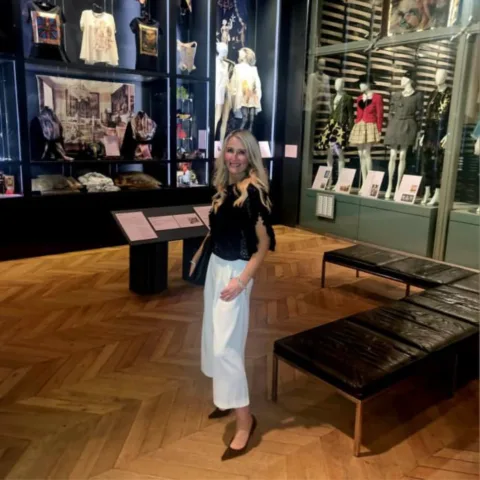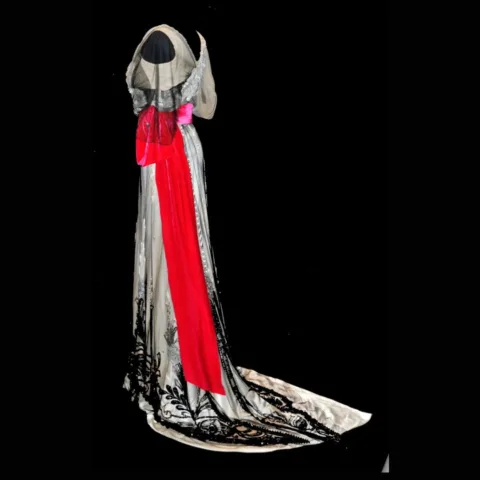The Bowes Museum Blog

Textile Conservation for the Masses
Alongside working on our own collection of costume and textiles, we also carry out commercial textiles conservation projects, for members of the public, and for other museums and institutions. We received a request from the verger of St. Romald’s in Romaldkirk, to take a look at one of their altarcloths, which was in a deteriorated condition.

Altarcloth in situ at St. Romald’s, before conservation
The altarcloth was made in living memory, dating to the first quarter of the 20th century. It is made from a cream silk damask, with wool and metal thread embroidery, and a wool fringing. The altarcloth setting is made from two separate textiles, the altar frontal and superfrontal, with a matching pulpit fall.

Detail of superfrontal – wool and metal thread embroidery

Detail of embroidery
The condition of the altarcloth was poor, with the silk damask splitting and fraying. It was vulnerable to further damage with ongoing use. Damage like this is caused by a variety of factors, commonly light exposure, which although will not bleach the colour from the already cream silk, will and has caused the fibres to weaken. Handling also leads to damage of this kind. The altarcloths are stored in a custom-made cupboard, and even with very careful handling, and good care, after nearly 100 years of sustained use, the textiles are showing signs of their age. The pulpit fall was in a particularly bad condition, a result of heavier handling and use, and had a previous unsympathetic repair.

Puplit fall in poor condition, with a grey cotton patch repair stitched over a split across the fabric

Silk damask lost along upper edge, with calico exposed beneath
We had a small window of opportunity to carry out necessary conservation work on the altarcloth before it was re-instated on the altar for the Easter services.
Upon arrival at the museum, the textiles were wrapped and frozen, a standard practice to ensure that no pests are brought in with them. We then set up a work station in the Glass Cube within the Fashion & Textiles Gallery. This space is used as a store for flat textiles, location for study sessions, and also as a visible work station for conservation. Myself and Icon/HLF intern Jamie set up camp for the week, with posters up in the gallery to explain what we were working on.

Working in the Glass Cube within the Fashion & Textiles Gallery
The conservation treatment was a straightforward one. As the textiles will remain in constant use, we encased the weakened and damaged areas of silk in a colour-matched conservation-grade net. This has a dual effect of holding down loose fabric, and offering a physical barrier layer between the historic textile and hands, bibles, or anything else that may come into contact with it. The net disappears visually, making the conservation almost invisible from up close, and completely indistinguishable from the position of the congregation.

Conservation net overlay, pinned in position on the superfrontal
The previous repair on the pulpit fall was removed, and replaced with a patch of colour-matched silk, inserted beneath the split, and stitched into position to re-instate the strength of the textile, and disguise the loss of fabric. For fine silk fabric such as this, we used etymological pins, fine curved surgical needles, and colour-matched polyester thread.

Removing the previous patch repair on the puplit fall

Inserting a colour-matched silk patch into the split
After 40 hours of conservation work, the altarfrontal, superfrontal, and puplit fall were complete, and returned to St. Romald’s in time for the Easter service.

Unwrapping the altarcloth in the vestry of the church
There will be an open day at the church on Saturday 14th May, between 10am – 2pm, with the conserved altarcloth on show, and Jamie and I present to talk about our work.
Katy Smith, Textile Conservator







